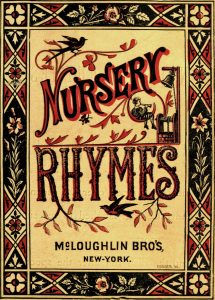
Do you remember singing along to the Teddy Bear nursery rhyme when you were growing up? You might not remember yourself making the movements and words as a toddler, but more than likely as an adult today, even if you haven’t performed the rhyme in many years, you still remember the general gist of it, if not the entire piece. Have you ever wondered why that is?
Nursery rhymes, as it turns out, are absolutely instrumental in developing a child’s learning and they have many benefits that go well beyond keeping a toddler busy for a few minutes before nap time. What toddler’s don’t know is that while they’re laughing and singing along to the funny words and phrases in preschool, they’re building the important foundation necessary for brain development and things like reading and writing.
Below we’ve outlined some of the biggest benefitts to teaching your child nursery rhymes.
They’re Short, Sweet, and Repetitive
The average nursery rhyme only has a couple of unique phrases and relies heavily on repetition, and this isn’t an accident. For example, in the Teddy Bear rhyme and Teddy Bear dance the words “teddy bear” are repeated 16 times for a total of 32 words. Considering that the entire rhyme is only 56 words long altogether, that is a huge percentage. This helps the child remember the words they just heard and helped them to become aware of the phonemes that make up the words.
They Help Children Learn Patterns
Carrying on with the Teddy Bear rhyme, consider how the words used are also descriptive of the actions you teach the child learning it. “Teddy, bear, Teddy bear, Turn Around. Teddy Bear, Teddy Bear, Touch the ground!” This is done so that the words pop up at the child, making them more aware and more focused on the individual sounds and actions associated with them. This allows the child to learn that letters represent sounds and similarities between words make them sound the same to the listener. This is what enabled children to better understand how to read when they begin learning about sequences of words in books.
They Introduce The Idea of Plot Lines
Yes, even the Teddy Bear rhyme has a plot! Rhymes help children learn that stories have a beginning, middle and end and makes them unconsciously pay attention to the development of the narrative, which of course is highly useful in the reading and writing learning stages later in life. In the Teddy Bear song, children are learning about completing tasks, and this also aids parents with training them on bedtime routines. Instead of teaching your child to brush their teeth and change into their PJs before bed, the Teddy bear song is encouraging them to sing and dance before bed.
They Assist With Hand-Eye Coordination and Memory
When dancing along to playful rhymes in a timely fashion, the child’s brain is becoming stimulated and often times the involvement of both words and motion help them remember the words and the timing of the rhythm. A prime example of this is how toddlers will often wait to begin “turning around” in the Teddy Bear rhyme until the words are actually spoken.
There are many other benefitts to nursing rhymes such as encouraging your child to participate in social settings and coordinate within a group, all of which are things that are incredibly useful in their ongoing development, so pick out your favorite childhood nursery rhyme and get to singing! If nothing else, it’s an incredibly fun activity for children and encourages positive interaction with whoever is participating.